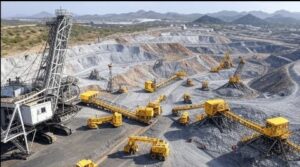DENSE MEDIA SEPARATION DEMONSTRATES 34% UPGRADE IN METAL GRADES
Azure Minerals Limited (ASX: AZS) (“Azure” or “the Company”) is pleased to announce that its ongoing metallurgical testwork program continues to make significant improvements on the already positive results from its 100%-owned Oposura zinc-lead-silver project.
In several parts of the Oposura mineralised system, thick mineralised intersections comprise narrow bands of very high-grade mineralisation separated by intervals of lower grade or waste material. Azure’s studies indicate that some of these thick mineralised zones may be more suitable to a “bulk” mining approach rather than “selective” mining, thereby reducing unit operating costs and maximising resource recovery.
Recent metallurgical testwork focused on optimising crushing, screening and Dense Media Separation (DMS) processing prior to sulphide flotation to investigate this option. The use of DMS technology upgrades “bulk” mined material by rejecting waste material ahead of entering the milling circuit. DMS is most effective in upgrading ore when there are distinct density differences between mineralised material and waste rock, as is the case at Oposura.
The crushing, screening and DMS process resulted in lead grades increasing from 4.10% Pb in the crusher feed to 5.51% Pb in the mill feed and zinc grades increasing from 6.06% Zn to 8.13% Zn, an overall upgrade of 34% for each metal.
The DMS processing flowsheet is described as follows:
Prior to entering the DMS circuit, mined material is crushed to 80% passing 9mm. Fines less than 1.18 mm are screened off so as not to interfere with the DMS process. The fines are retained to be added later to the product from the DMS circuit.
The screened coarse fraction enters the DMS circuit; heavy particles carrying zinc and lead sulphides “sink” and lighter particles with minimal sulphides “float”; the lighter particles are rejected as waste; the DMS sinks, or product, is combined with the screened fines to produce an overall product; this product then becomes mill feed.
Table 1 shows the results of DMS testwork conducted on the same composite material that was used for the previously reported (refer ASX announcements dated 12 & 26 April 2018) batch and locked cycle flotation tests.
The screening process captured fines totalling 17% of the crusher feed. The lead and zinc grades of the fines was 6.32% Pb and 8.29% Zn, which is an upgrade of 54% and 37% respectively from the crusher feed grade.
When the coarse material was processed through the DMS circuit, 35% of the feed, the vast majority of which was waste material, was rejected. This resulted in the grade of the lead and zinc in the DMS product each being upgraded by 44%.
Once the fines were added back into the coarse material, the overall screening and DMS result was a rejection of 30% of the crusher feed while delivering a 95% recovery for both lead and zinc.
The crushing, screening and DMS process resulted in lead grades increasing from 4.10% Pb in the crusher feed to 5.51% Pb in the mill feed and zinc grades increasing from 6.06% Zn to 8.13% Zn, an overall upgrade of 34% for each metal.
Table 1: Screening and DMS Composite Sample Test Results
The Company is continuing to assess opportunities to upgrade mill feed grade using screening and DMS circuits and to improve processing performance by optimising various mining and crusher feed grades.
-ENDS-
For enquiries, please contact:
Tony Rovira Managing Director Azure Minerals Limited Ph: +61 8 9481 2555 | Media & Investor Relations Michael Weir / Cameron Gilenko Citadel-MAGNUS Ph: +61 8 6160 4903 |
or visit www.azureminerals.com.au
Original Article: http://azureminerals.com.au/wp-content/uploads/2018/06/180612.pdf

















